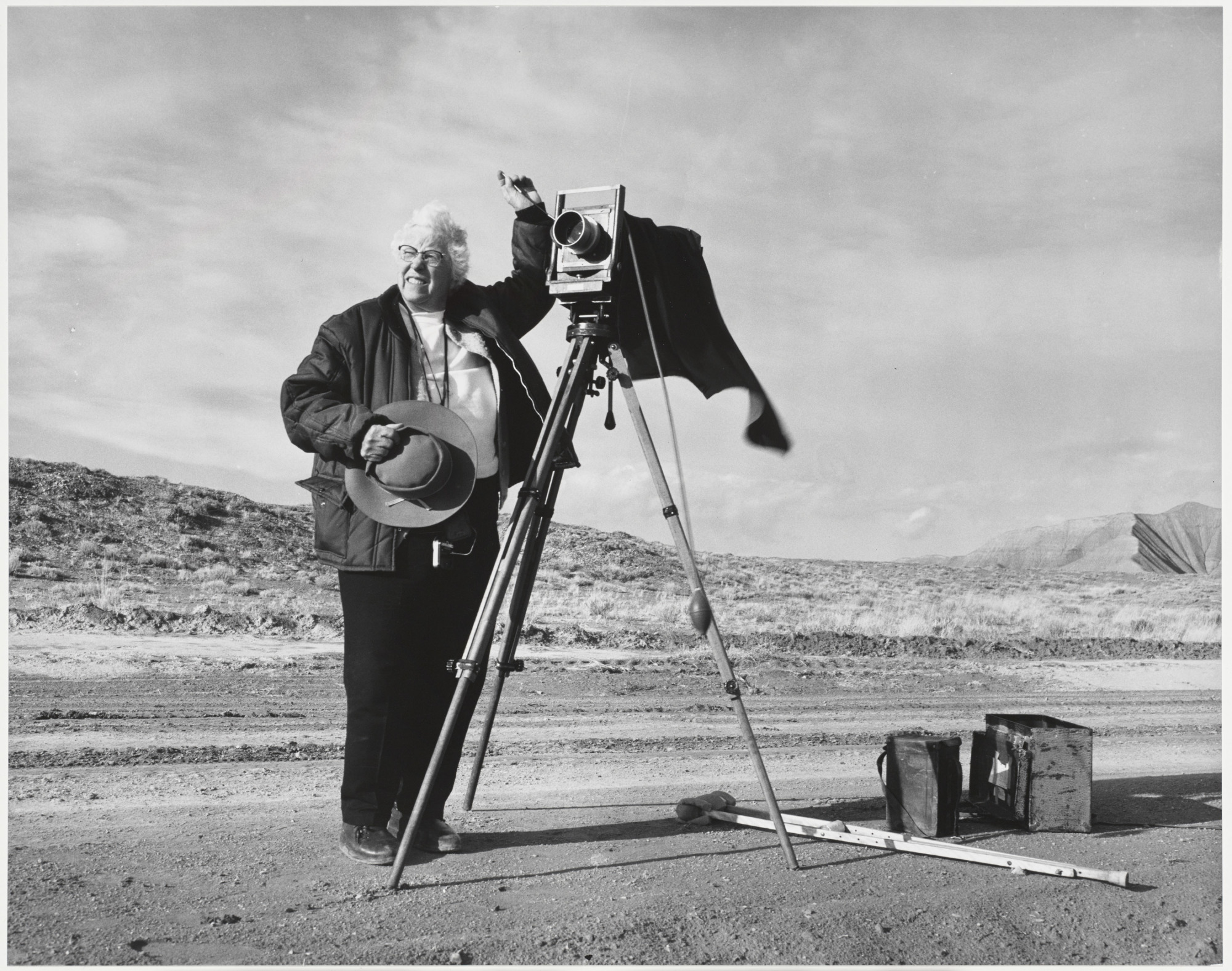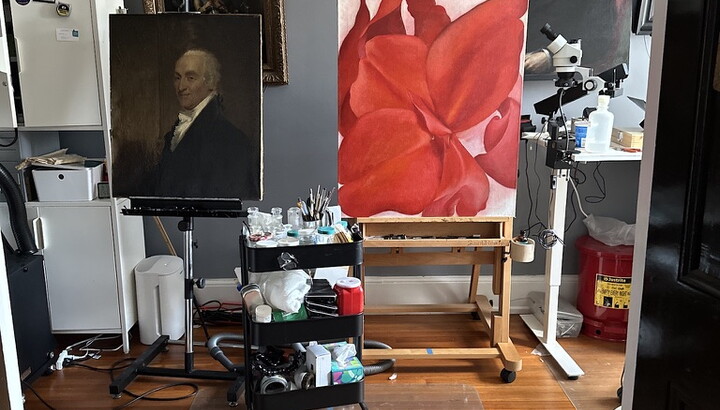The Carter Blog
Carter ARTicles
Shedding light on Laura Gilpin’s photographic processes: a collaboration between the Carter and UT Dallas
Jun 26, 2024
Without a doubt, one of the highlights of the Carter’s photography collection is the Laura Gilpin archive. With a career spanning over 70 years, Gilpin was one of the 20th century's most productive photographers. In the early days of her career, she studied with Clarence H. White and adopted a pictorialist approach, prioritizing aesthetic beauty and artistic expression over the use of photography as a tool for documentation. As time went on, she gravitated toward a more direct photographic style and became renowned for her extensive documentation of the Diné (Navajo) people and the scenery of the Southwest. In 1979, Gilpin left the Laura Gilpin Papers, her personal library collection, and more than 6,000 prints and 20,000 photographs to the Museum.
In 2020, when Photograph Conservator Ariadna Rodriguez Corte joined the Carter’s Conservation Department as a fellow, she was thrilled to get to study this incredible archive. During her time at the Carter, she focused on the examination of all sorts of materials in the Gilpin collection: from cellulose nitrate negatives and lantern slides to gelatin silver, platinum, and palladium prints as well as manuals and letters. During her research, Ariadna discovered something new and intriguing about Laura Gilpin’s platinum and palladium prints: They appeared to be hand-coated with an oil- or wax-based substance.
To achieve various levels of contrast, hue, and luster in a final print, photographers working with platinum and palladium printing often experiment with chemical recipes and coatings. One of the most frequently used coating agents is linseed oil, which is known to give a slight sheen to prints. With this knowledge and a careful visual examination, Ariadna and her colleagues hypothesized that Gilpin’s coating could be this kind of oil. A note referencing a coating recipe containing linseed oil that was found in one of Gilpin's notebooks substantiated this hypothesis. However, these data were not enough to determine that the prints were indeed coated with a linseed oil or wax formulation.
Identifying the materials the artworks and their coatings are made of is fundamental for a variety of reasons, including the objects’ future preservation as different materials require different storage, treatment, and conservation practices. Luckily, there are several analytic techniques and instruments that can help recognize these materials, and this is where the collaboration between the Carter’s Conservation Department and the scientists from the Material Science and Engineering Department of the University of Texas at Dallas came into the picture. Dr. Amy Walker and PhD student Alexandra DiCarlo analyzed samples collected from the surface of various Gilpin prints, as well as two prints that were analyzed without sampling, because the photograghs were able to fit on the enclosed instrument’s sample stage.
-

Laura Gilpin's print, The Black Mesa, allocated inside the Raman Spectroscope during the diagnostic analysis.
Materials under investigation can be quickly and easily identified on a molecular level through an analytical technique called Raman spectroscopy, which relies on scattered light to measure the molecular vibrations energy of a sample’s material. The sample is illuminated with a laser beam at a specific wavelength, and the instrument captures the resulting spectrum of the molecular composition of the material. The spectrum is then compared to a database of standardized spectra, and it works as a fingerprint that allows to precisely identify the chemical composition of the sample. Accuracy, versatility, and non-destructiveness are some of the reasons why Raman spectroscopy has become an essential analytical tool for the non-invasive examination of artistic materials over the past 30 years.
Laura Gilpin prints
Slide Controls
Slides
Through their investigations, Dr. Walker and DiCarlo were able to identify with confidence the coatings’ components on three of the four prints examined. The coating applied by Laura Gilpin on A String of Peppers and [Girl grinding corn, Mesa Verde] was confirmed to be linseed oil, while the coating on [Hydrangea] has been identified as carnauba wax. Sometimes the analyses can be deemed inconclusive for several reasons, and that was the case with The Black Mesa. Further analyses were done on this print, but in the end, it was not possible to determine with certainty if the coating was an oil- or wax- formulation.
-

Raman spectra of samples 1 and 2 suggest that the coating on photograph no. 1, A String of Peppers, is oxidized linseed oil.
-

Raman spectra of samples 3 and 4 suggest that the coating on photograph no. 2, [Hydrangea], is wax (likely carnauba wax).
Even if the analyses on The Black Mesa were inconclusive, this collaboration still provided Ariadna and the Carter’s Conservation Department with crucial information for the future preservation of these prints and helped in shedding light on Gilpin’s photographic practice. In addition, this project gave the UTD Material Science students a unique opportunity to work on original photographs and to learn about photographic processes and materials. As conservators, we believe it is through collaboration with other professionals that we can really broaden our knowledge and achieve the best results in preserving our collections. We consider this longstanding partnership a great asset, and we look forward to collaborating on the next exciting project.
-
Fernanda Valverde, Ariadna Rodriguez, and Alexandra DiCarlo observing the Raman spectroscopy analysis spectra of a Laura Gilpin print.
















